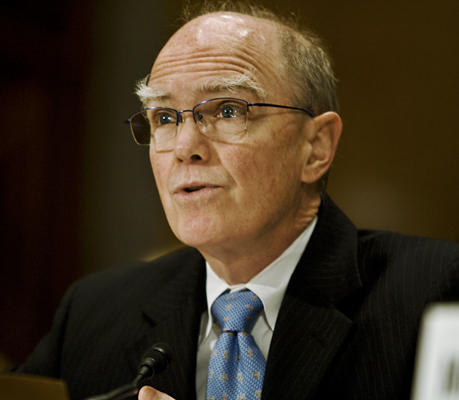How Recovered COVID-19 Patients Might Help Fight the Pandemic
These patients could be a vital resource for public health and for the economy.
Published by The Lawfare Institute
in Cooperation With

President Trump is growing so worried about the economic impact of the coronavirus pandemic that he’s talking about drastic action, including ending the lockdown in states that haven’t seen lots of infections. He’s right to be worried and right to be looking for dramatic solutions. He may even be well served in this case by his skepticism about giving government public health experts the last word on fateful economic decisions, for reasons I’ll discuss. But ending the lockdown in states with low infection numbers is the wrong answer when we haven’t tested widely; many of these states almost certainly have an underground contagion that will explode as soon as the lockdown is lifted.
There are, however, responsible alternatives that might address the underlying concern. Instead of easing the lockdown state by state, we could do it person by person. Specifically, we could end the lockdown for people who have already recovered from COVID-19, the respiratory disease caused by the novel coronavirus. These people offer something we badly need right now: a workforce that probably can’t get infected and probably can’t infect others. I say probably because there is plenty we don’t know. But there is reason to believe that people who recover from COVID-19 pose much less risk of infecting others and face less risk of being reinfected themselves. There’s still much uncertainty on both counts, but that’s the way to bet.
Which means that recovered COVID-19 patients could be a vital resource for public health and for the economy. They can work directly with people still fighting for their lives in hospitals. They can tend to the elderly without fear of spreading the disease. Indeed, it’s possible that their blood plasma can be used to treat the sick. And, as their numbers increase over the coming weeks, they can take on other jobs that call for close interactions with the uninfected—grocery and pharmacy sales, driving for ride-hailing services, and the like. They’ll suddenly be in high demand, and just in time, since many of them have been thrown out of work by the mass lockdowns. Instead of living off stimulus payments, they’ll be earning good money, performing critical jobs, and free to go out and spend it without fear.
By itself, ending the lockdown for those who’ve recovered from COVID-19 won’t end the economic crisis. They are a tiny population in the U.S. right now but one that’s growing about as fast as infections did last month, which is to say it should be more or less doubling every few days. (In Italy, which is a couple of weeks ahead of us, there are 8,300 recovered patients.) Ending their lockdown would allow both a real and a symbolic step toward economic normalcy, not to mention the public health benefits it would offer at a time when we need as many safe caregivers as we can muster.
What would it take to free up this resource? Three things.
First, we cannot simply presume recovered patients are safe. We need the best available public health data about recovered COVID-19 patients, to get answers about when they stop being contagious and their resistance to reinfection. Even with more data, however, we are unlikely to have complete certainty on either point, and even the recovered will need to take precautions while out and about. But the decision to end their lockdown—in the face of some degree of uncertainty—should take into account economic, as well as health, risks.
This is where the president’s famous suspicion of expertise might do him some good. The government’s public health officials are indeed experts, but only in one part of the crisis we now face. They are ruled by the same incentives that govern all bureaucracies, as the recent testing failures by the Centers for Disease Control and Prevention (CDC) and the Food and Drug Administration (FDA) should remind us. And the bureaucratic incentive for public health officials is to maximize public health.
As professionals, they’ll be judged by their success in suppressing the virus—not by their role in restoring the economy. To ensure that the desperate state of the economy gets proper weight, it’s entirely appropriate for the president to force a decision now, using public health officials’ best guesses about infection and reinfection risks—even if the uncertainty makes them uncomfortable. The stakes are higher here than usual, but this is the kind of call we have presidents for.
Second, we need good ways to identify the recovered. Tests for the virus identify people who have the infection; we also need to identify recoveries by testing for the antibodies that show the virus has come and gone. Those tests are on the way, but they’re caught up in the FDA approval processes. The administration should be pushing the FDA to act faster. Until we have those tests, we’re going to have to rely on doctors to write letters identifying patients who have recovered.
Third, this system requires a mechanism to enforce rules that end the lockdown for some people and not others. Because we will need to rely on physician letters initially, we should set uniform standards for representations from doctors. And the government should make clear that false claims of recovery can be criminally prosecuted as fraud. (If this proves insufficient, states and the private sector could issue 3-D barcodes to help stores, hospitals and lockdown enforcers to verify claims of recovery using a mobile phone. Similar systems are currently used across Asia.)
Most importantly, if we want this to work, we need to do all of these things now, and as impatiently as possible.
Which, of course, is where President Trump comes in. We’ve never needed his famous impatience more—as long as he can keep it well targeted.


.jpg?sfvrsn=e915b36f_5)


